

Damion Smy
GWM Cannon Alpha ute, Tank 300 HEV and Tank 500 recalled
15 Hours Ago
This is a seven-seat SUV, but not as we know it. Fast, comfortable, and efficient to boot, the X7 M50d is a winner.
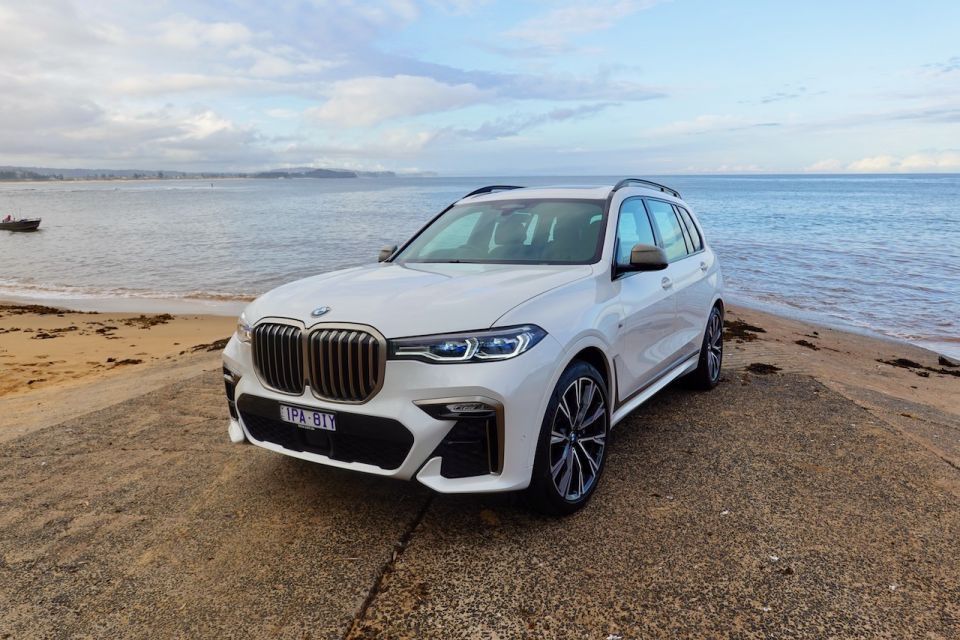
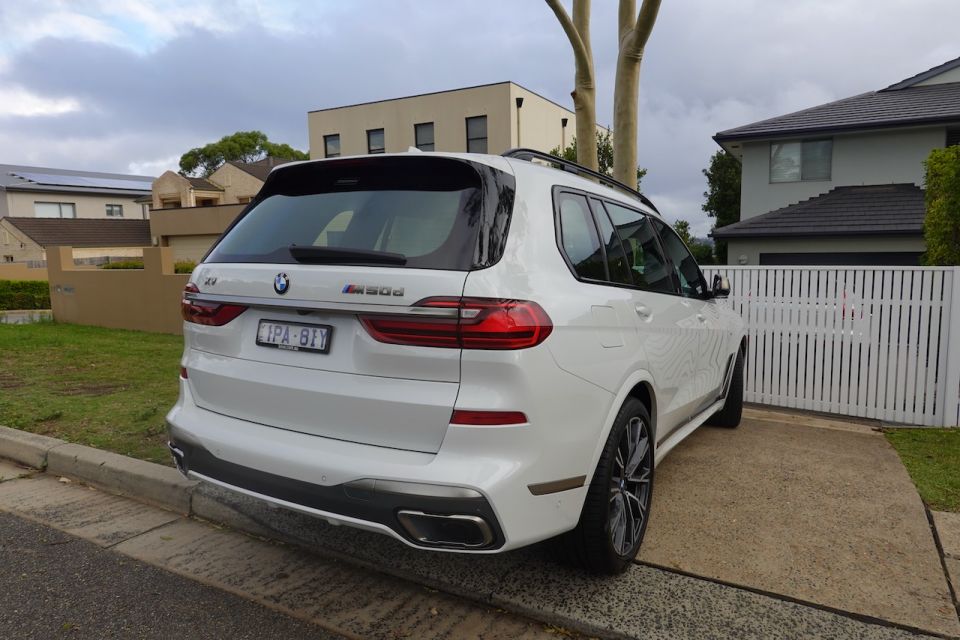

Senior Road Tester
New from
$124,900
excl. on-roads

Senior Road Tester
New from
$124,900
excl. on-roads


Senior Road Tester
New from
$124,900
excl. on-roads

Senior Road Tester
New from
$124,900
excl. on-roads
Quickly see how this car stacks up against its competition. Select any benchmark to see more details.
Where expert car reviews meet expert car buying – CarExpert gives you trusted advice, personalised service and real savings on your next new car.
One of my all-time favourite SUVs is the BMW X5 M50d. Last time I reviewed one was more than seven years ago, and the sub-heading read: ‘The BMW M5 M50d combines sledgehammer diesel performance with small car fuel-efficiency’.
Back then, it had a 3.0-litre inline six-cylinder diesel motor with three turbos good for 280kW of power and 740Nm of torque driving all four wheels. It could scoot from zero to 100km/h in just 5.4 seconds while top speed was a governed 250km/h.
Never before had a family-friendly SUV delivered so much excitement. At least that was my take. And, all this from a bloody diesel-powered six.
I didn’t give a toss the heavy-hitting X5 M of the same generation was more than a full second quicker in the benchmark sprint because when you had your right foot buried deep into the floor of the M50d, the mid-range shove was exhilarating.

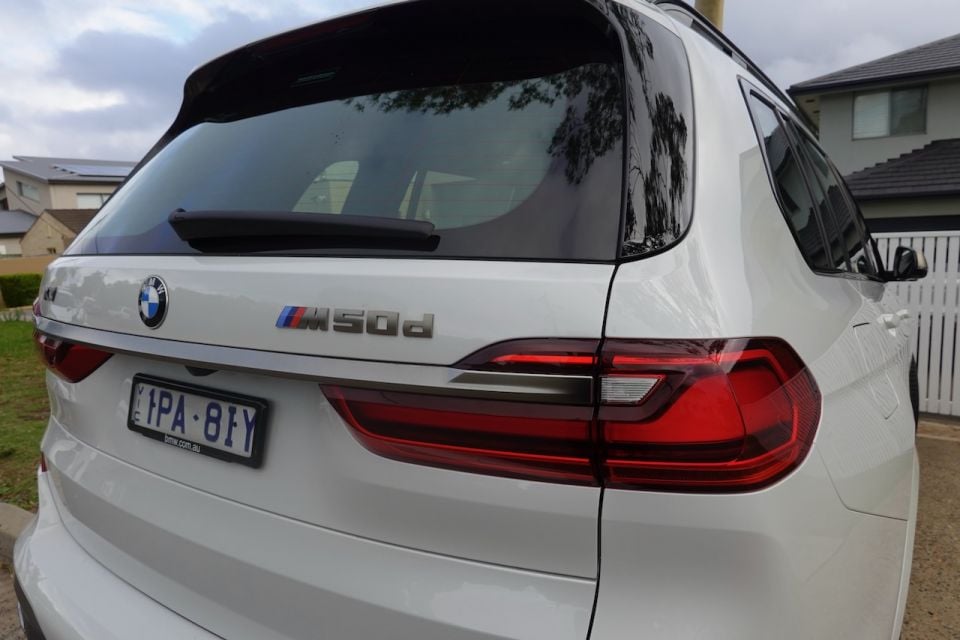
What’s more, you could drive it hard all week and still have plenty left in the tank to cover the weekend activities.
BMW rated consumption at 7.5L/100km, but we saw 10.1L/100km with scant regard for economy. To me, that was the real game-changer which made up for the extra tenths lost to the X5 M.
This is a long-winded way of explaining why the BMW X7 M50d – the biggest BMW ever built – is exciting for me. It’s packing the latest and greatest quad-turbocharged six-cylinder diesel engine.
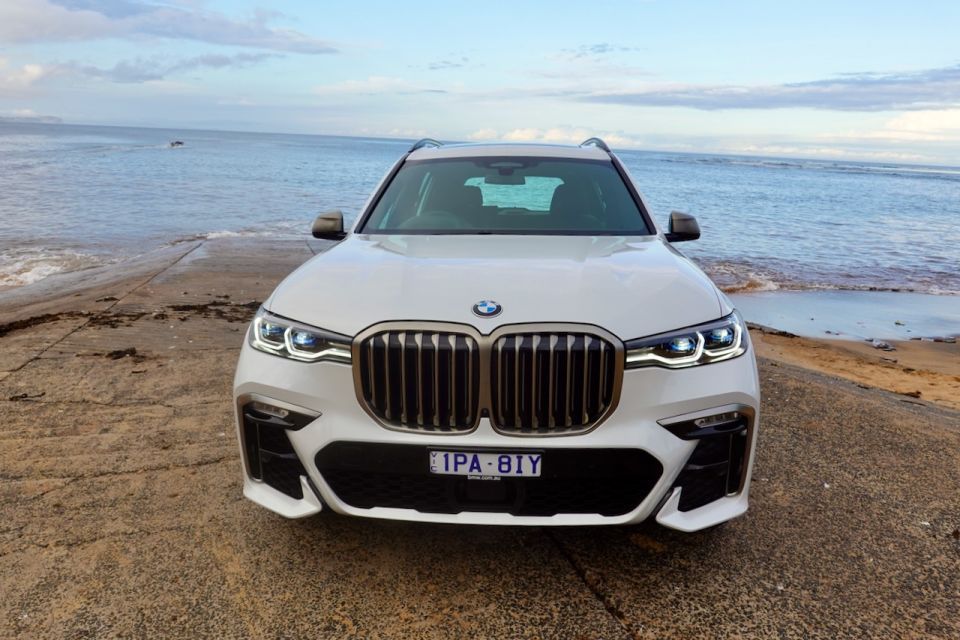
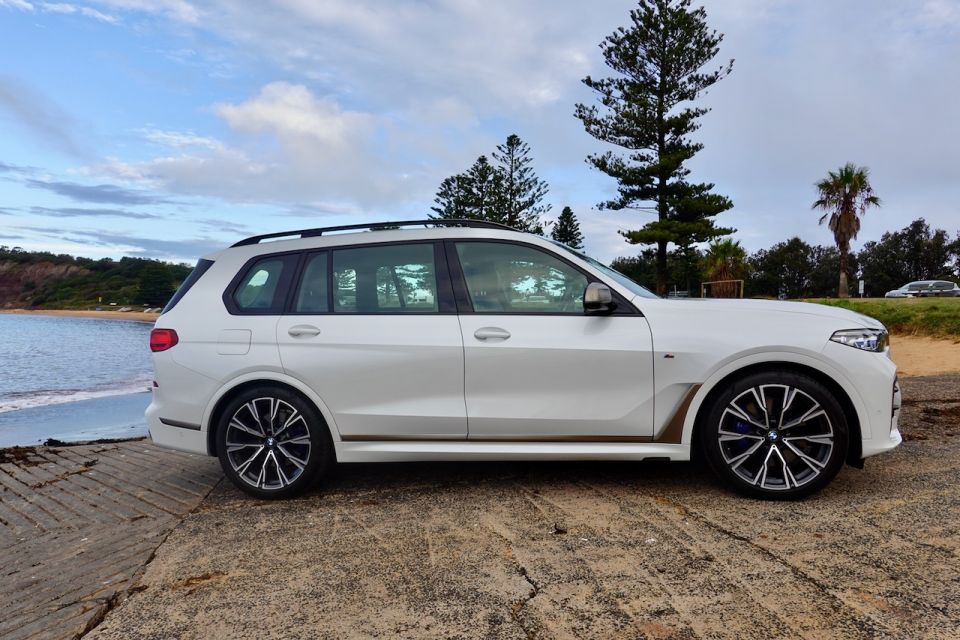
It shapes as the perfect long-range cruiser, which is exactly what I had in mind.
Sydney to the Gold Coast in 10 hours was the journey. I was heading for Terranora, a small enclave in the hills above Tweed Heads on the far north coast of NSW, to visit my mum. Better than a basic Jetstar fare, right?
I also wanted to take one of my surfboards with me. The fact it’s a seven-footer is irrelevant, because it comfortably sat in behind the front row along with a couple of large bags and other gear.
From any angle the BMW X7 is a huge hunk of a vehicle. You can’t compress or disguise a 5.15m car, no matter how hard you try. By way of comparison, the five-seat BMW X5 measures 4.92m long.
It’s not the longest luxury seven-seater in town, though. That accolade goes to the Mercedes-Benz GLS, which edges out the big BMW out by just 62mm.
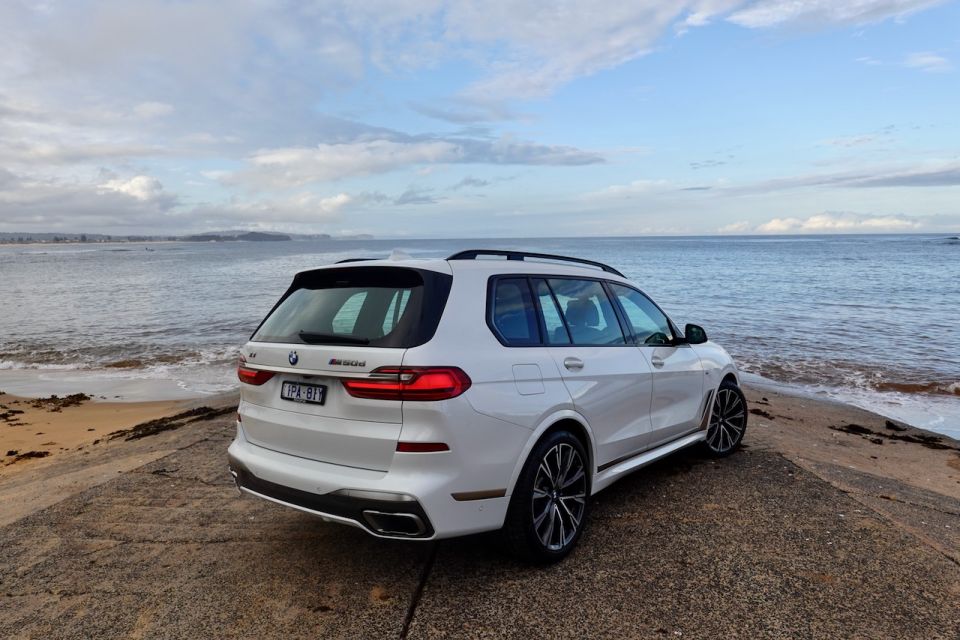
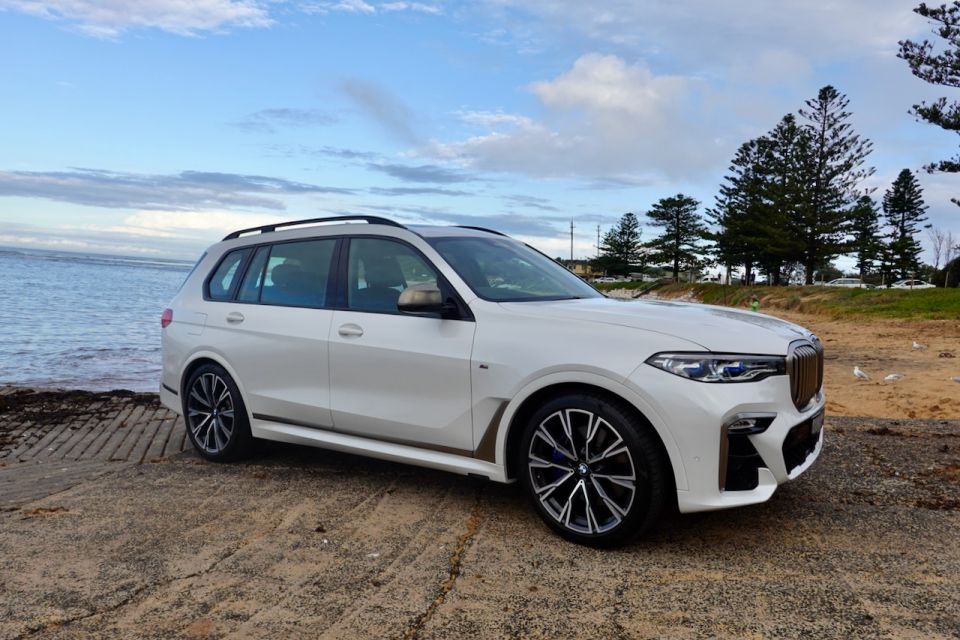
Subtlety has been thrown out the door by the designers in Munich. The BMW X7 has BMW’s largest ever kidney grille, which goes hand-in-hand with its 22-inch wheels.
There are some cool cosmetic cues (not many, mind) such as laser lights, which feature a blue signature. You couldn’t call it attractive or even handsome, it’s just bloody big.
Whichever way you look at it, full-size luxury SUVs are a niche play at best. In this case, there are just two variants to choose from.
Entry point to the BMW X7 range is the xDrive30d, priced from $119,900 before on-road costs. It packs a 3.0-litre twin-turbo six-cylinder diesel mated with an eight-speed automatic transmission sending drive to all-four wheels.
For more excitement there’s the high-performance BMW X7 M50d tested here, armed with a quad-turbo inline-six engine and a $169,900 before on-road costs price.
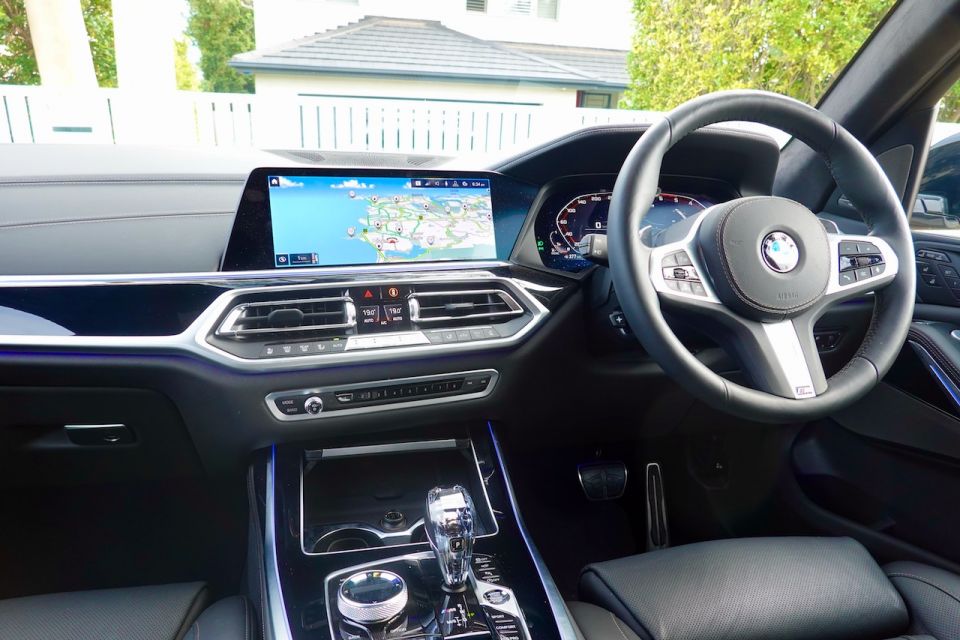
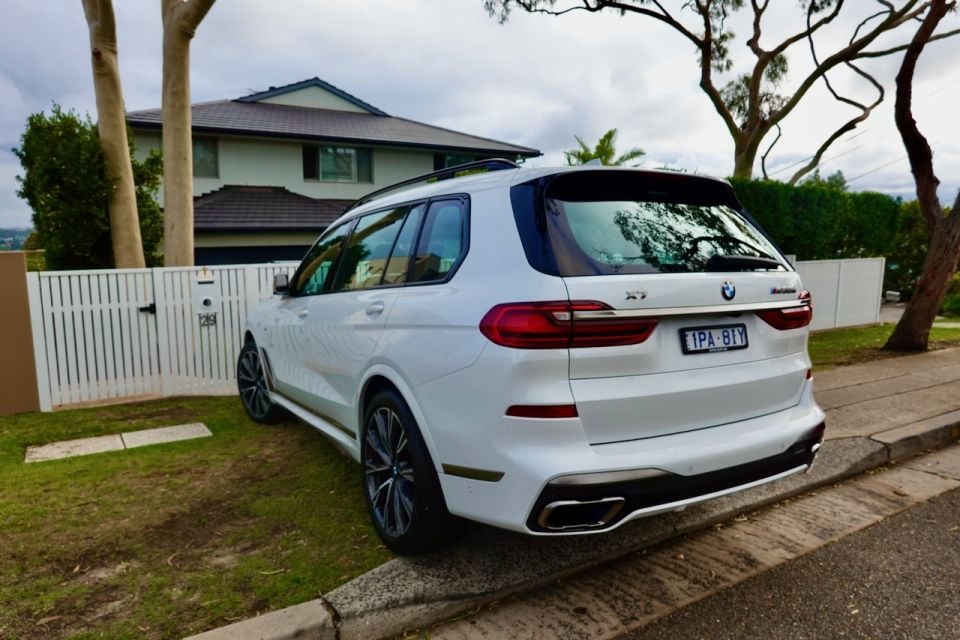
While it might be a rarefied segment on the SUV landscape, the BMW X7 M50d has some close rivals, namely the Audi SQ7 ($161,542) and SQ8 ($165,500).
Mercedes-Benz has the $151,300 GLS400d, but will launch the high-performance Mercedes-AMG GLS63 later this year.
Buy your new car without the stress. It's fast, simple and completely free.

Great service from Travis and team, second time I have used this business would not hesitate to recommend them to anyone
Craig C.
Purchased a Ford Ranger in Sunshine Coast, QLD
CarExpert helped Craig save thousands on his Ford Ranger, now let us save you on your next new car.
Find a dealLet’s start with the highlights across BMW X7 range for buyer clarity.
Key to ride comfort is BMW’s air suspension with automatic self-levelling. It works a treat when you’re carrying a bunch of gear, because it’s capable of adjusting the suspension at each wheel for optimum balance in an unevenly loaded car.
There’s also soft-close for all doors, keyless entry and start, a huge panoramic glass sunroof, sports seats for the front row with heating and lumbar, and the Parking Assistant Plus package with reversing assistant, side parking aid, rear-view camera, and a surround-view setup with top-, surround- and 3D views.
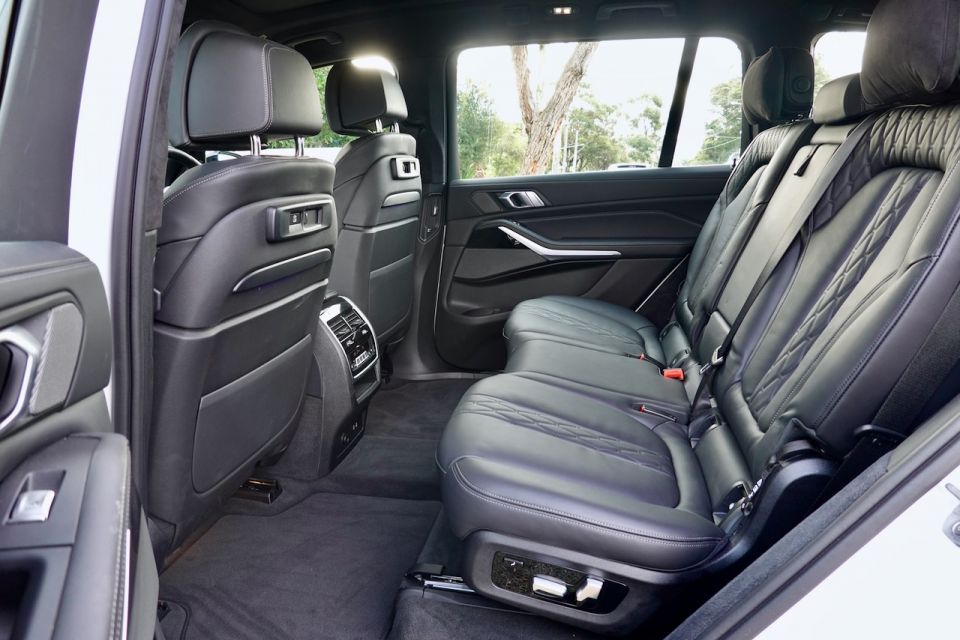
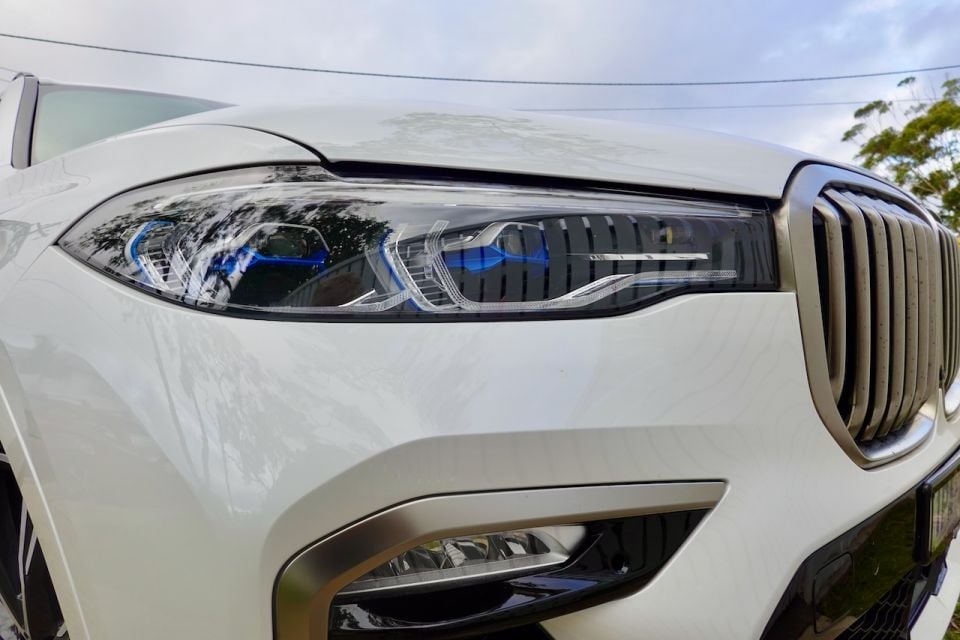
Additional comforts include the Connected Package Professional with Apple CarPlay, wireless charging, and adaptive LED headlamps.
There’s also two massive 12.3-inch screens, the latest BMW OS7.0 infotainment, and an intelligent personal assistant that lets you control the car with conversational commands prompted by ‘Hey BMW’.
The M50d adds cosmetic gear such as 22-inch M Light alloy wheels shod with run-flats, the M Aerodynamics package, M Performance exterior elements in Cerium Grey, and metallic paint on the outside.
Inside, there’s Merino leather trim with comfort seats up front, an M leather steering wheel, a dark suede headliner, five-zone climate control, heated and cooled cup holders in front console, and a harman/kardon surround sound system.
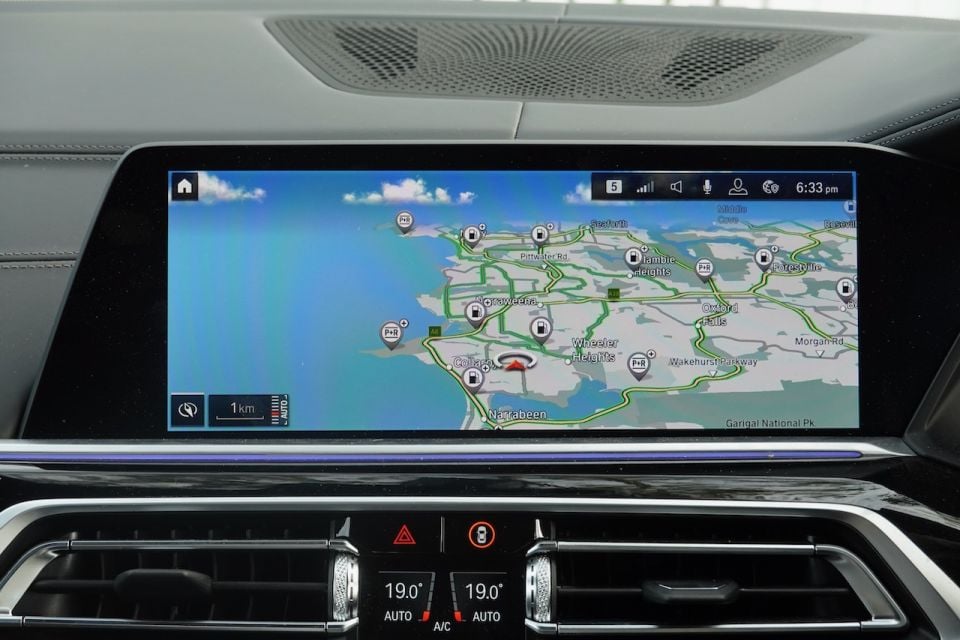
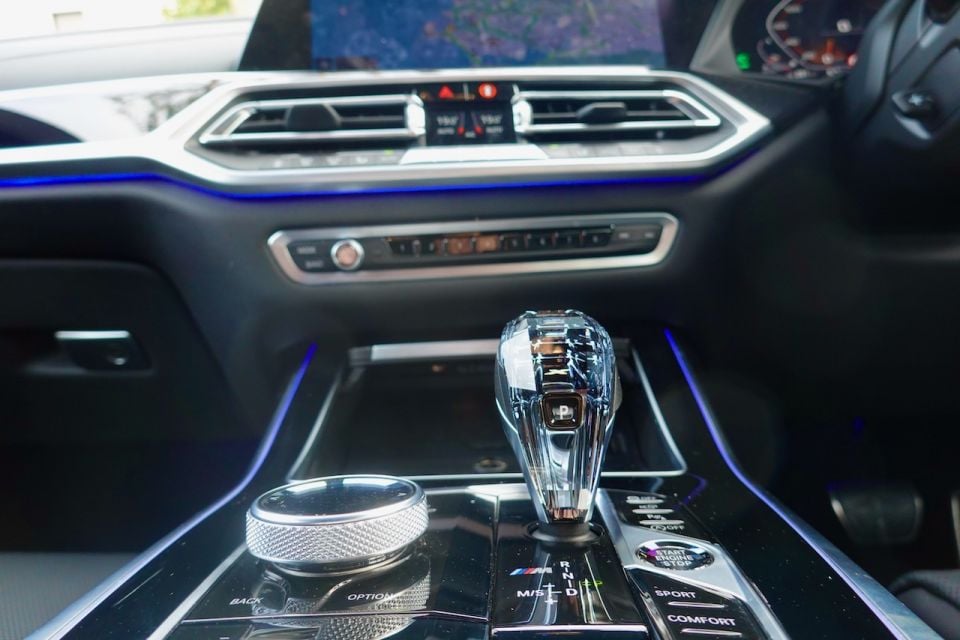
The more exciting BMW X7 also receives go-fast hardware such as a sports exhaust, an M Sport differential and brakes, and Executive Drive Pro – which provides active roll stabilisation and rear-wheel steering for enhanced cornering.
It’s an awful lot of kit, but the BMW X7 M50d is an awful lot of car. Our tester was also fitted with few options, including piano black trim.
But the headliner was the Indulgence Package. It bundles seat cooling, seat heating for the second and third rows and a massage function for front row, bumping the price to $178,800 before on-road costs.
Although it doesn’t have an ANCAP safety rating, the BMW X7 has a good foundation – it shares its bones with the five-star X5.
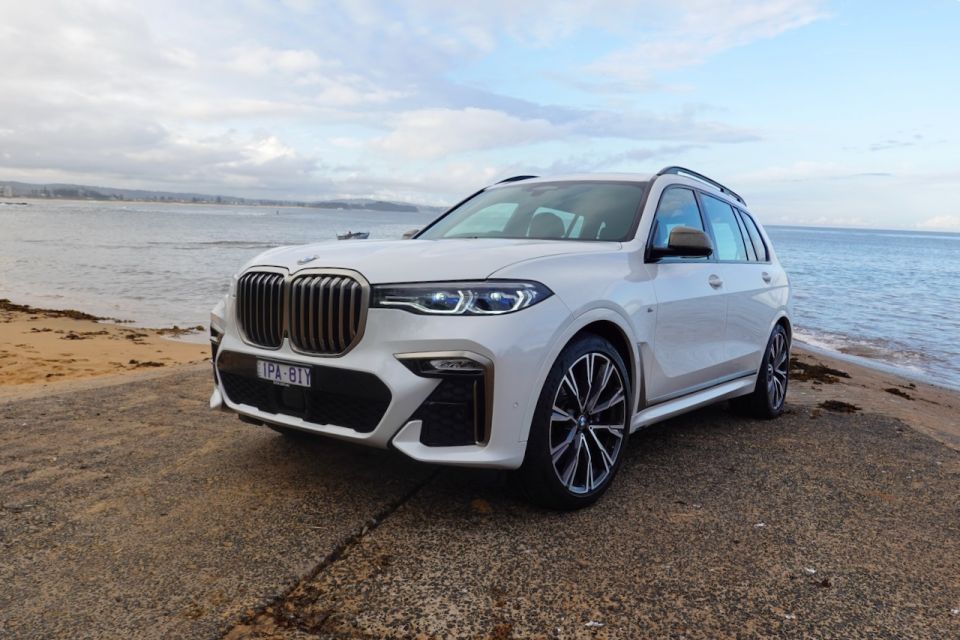
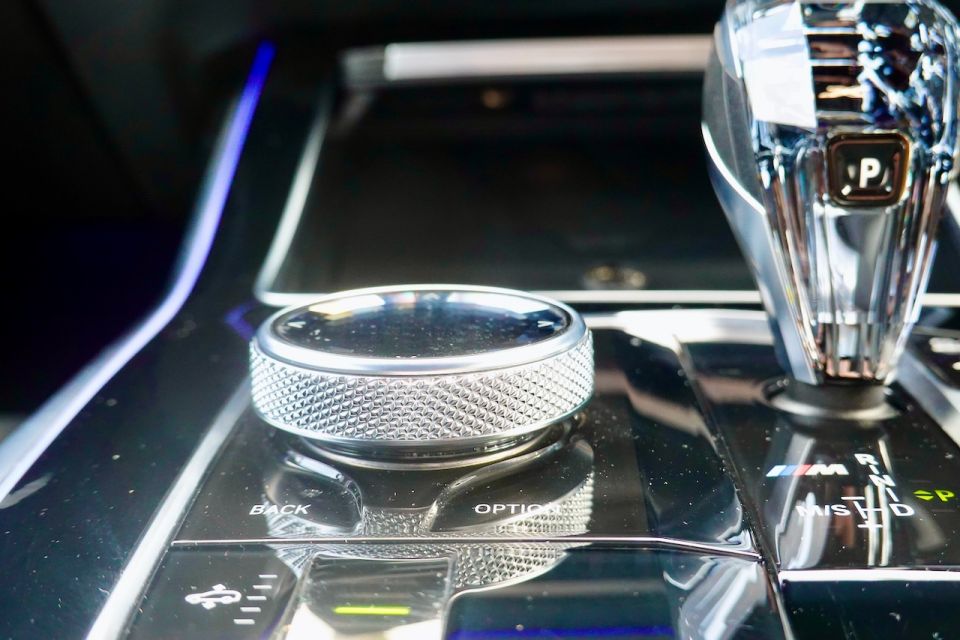
As one of BMW’s flagship models there’s plenty of active anti-collision systems on hand, including lane-departure warning, lane change warning and forward collision warning with brake intervention, rear cross-traffic alert, reverse AEB, and speed limit information.
The entire X7 range also gets active cruise control with stop and go, and autonomous emergency braking.
And if keeping your X7 M50d in good order when navigating tight parking spots in underground carparks is a concern, you’ll appreciate the arsenal of features on hand to show you every corner of this beast.
Climb aboard the BMW X7 and it’s all about luxury, from the opulent quilted Merino leather seats with extra-thick cushioning, to limo-style legroom for second-row passengers. Long haul comfort is truly exceptional.
Rear-seat passengers get the same premium leather-wrapped chairs, but they lack sufficient bolsters for ultimate comfort when cornering.
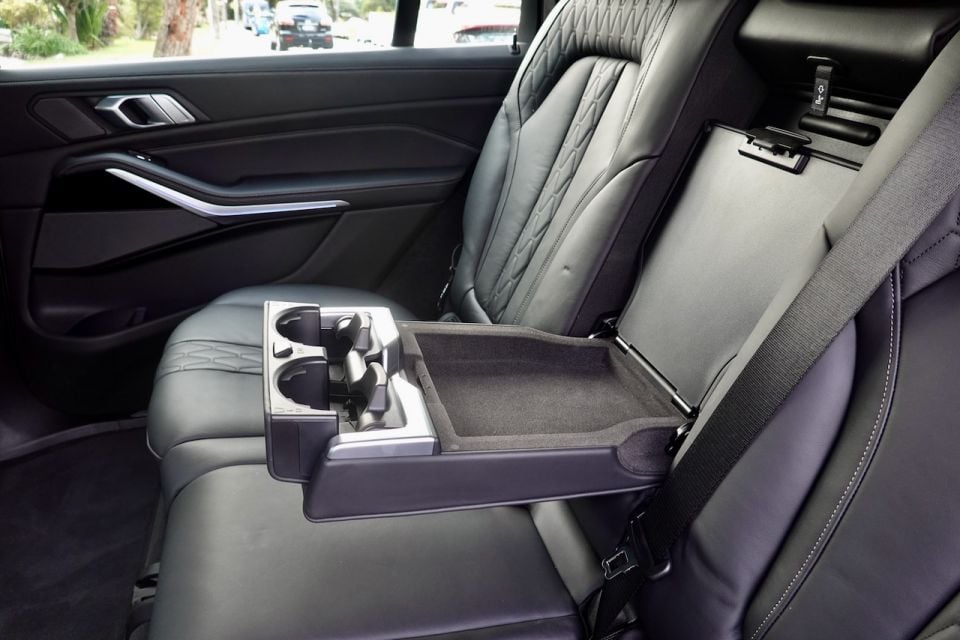

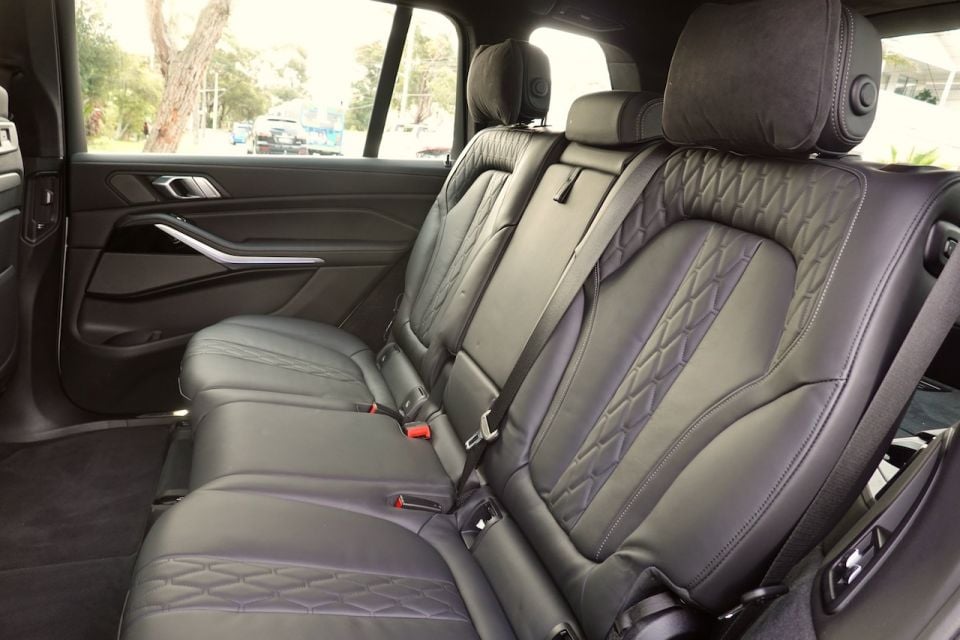
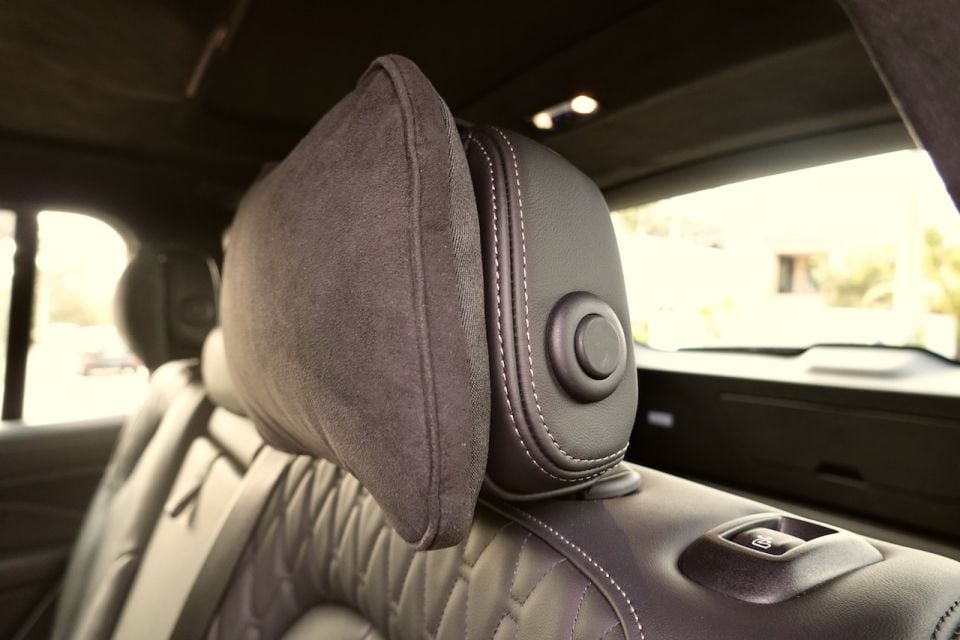
Our tester was painted in Mineral White Metallic with black leather – not exciting as perhaps the coffee or even black with the M-coloured piping in my view – but there’s plenty of choice to make it feel more special.
Up front, it’s an uncluttered cockpit as we’ve come to expect from BMW, boasting premium plastics and brushed metal accents along with plenty of piano black. Be warned, within just days of collecting the car that piano black on the centre console was covered in oily fingerprints. There are better trim choices in our view.
Everywhere you look is the same super-supple leather that graces the seats. And the headrests up front have an extra-soft pillow that looks and feels as though it’s down-filled. It really is a treasure trove of features inside here – if it is missing something, then I can’t think of what that might be.
There are a few highlights worth a mention, though, like the exquisite (if a bit kitschy) diamond-cut glass gear-shifter, sitting alongside a nicely knurled iDrive controller.
BMW appears to have clearly taken a leaf out of Audi’s playbook when it comes to switchgear because it has definitely raised its game.

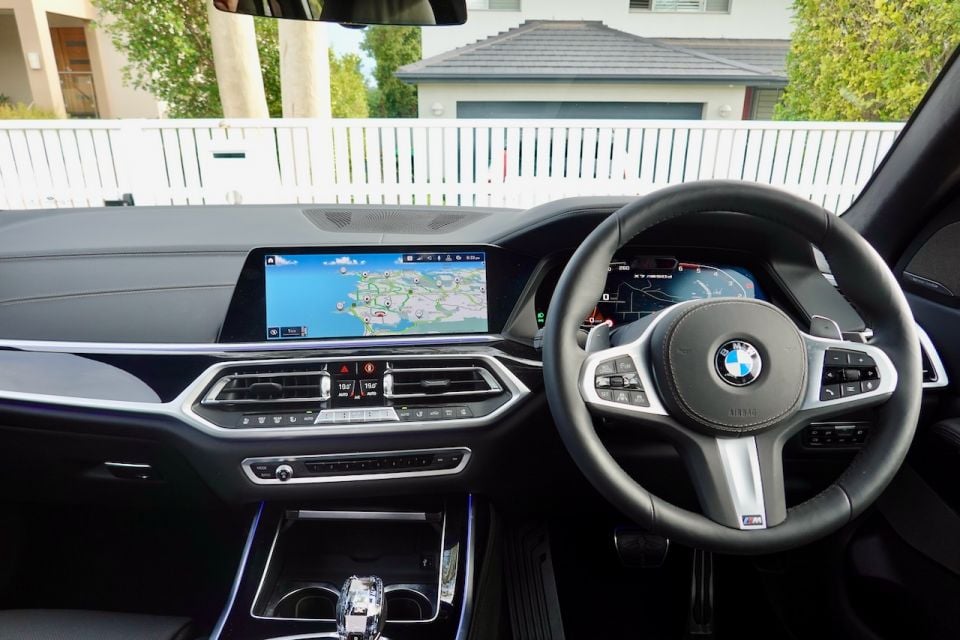
Kids and adults will get a kick out of the optional SkyLounge panoramic roof. It’s a three piece setup including a separate opening for the third row. Once darkness falls, the LEDs light up with some 15,000 graphic patterns to mirror a starlight, says the blurb from BMW.
The dash is dominated by two 12.3-inch displays for infotainment and instruments. We like the former for its colour and clarity, but the instrument screen seems lacking in both those areas despite being functional.
Apart from great leg-, head- and shoulder room for all three rows (maybe not so much the third row), there’s a stack of cargo-carrying potential in the M50d. With seats lowered flat, the super-sized Beemer can swallow more than 2100 litres of gear. There’s a generous 750L behind the second row, and a credible 326L behind the third.
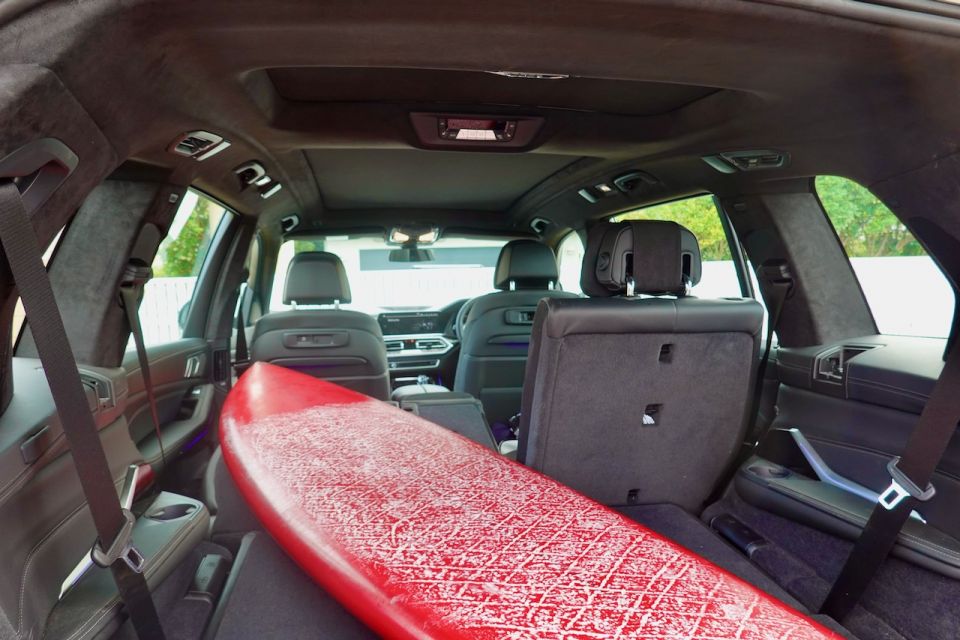

Better still, the X7 has a loadingmode,which uses the air suspension to lower the car by 40mm for easy access. It’s a godsend when you’ve got heavy boxes to load.
Moreover, there’s a two-piece electric tailgate that can operate with a kick of your leg under the rear bumper or via a button on the tailgate itself.
Choosing the M50d over the entry BMW X7 30d actually nets you the same 3.0-litre inline six-cylinder turbo-diesel, but instead of making do with two turbos the M50d uses four to send 294kW of power and 760Nm of torque through a standard eight-speed auto transmission to all four wheels.
They aren’t just any turbo, either, but a combination of two variable-vane turbines and two conventional turbos for less lag and more progressive acceleration. The X7 M50d generates maximum power at 4400rpm, peak torque is relatively short-lived between 2000 and 3000rpm.
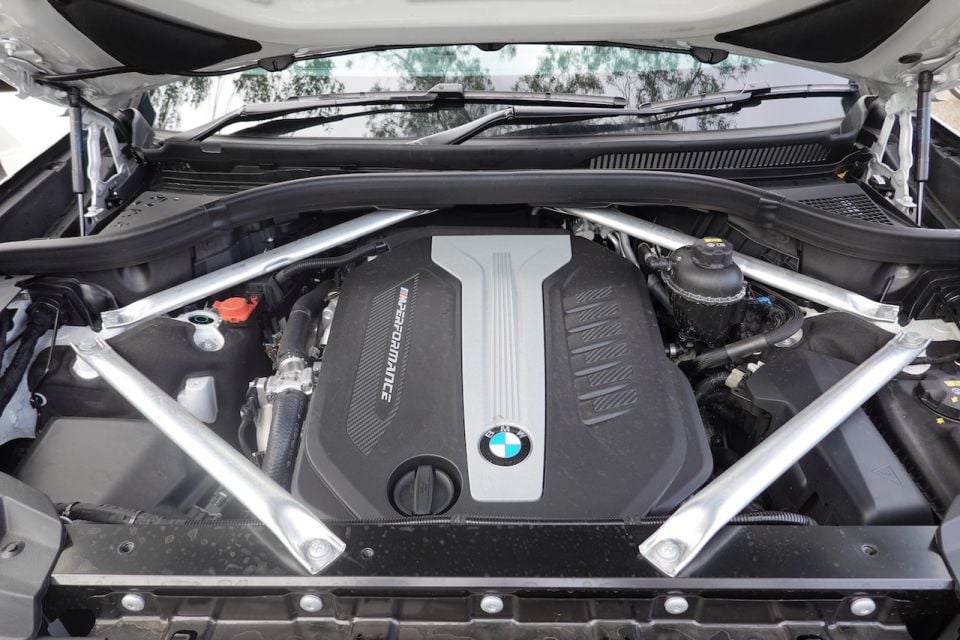
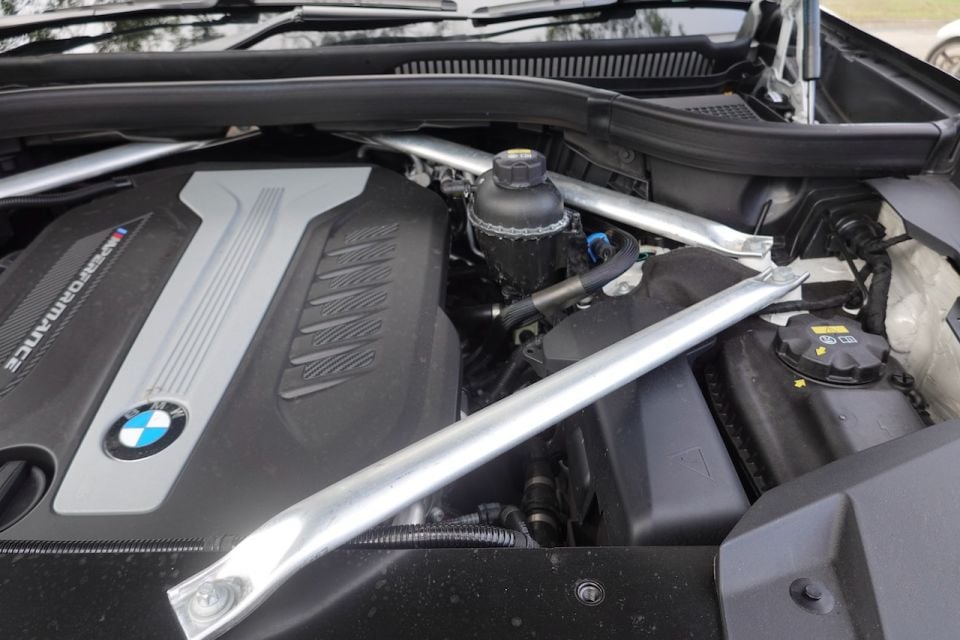
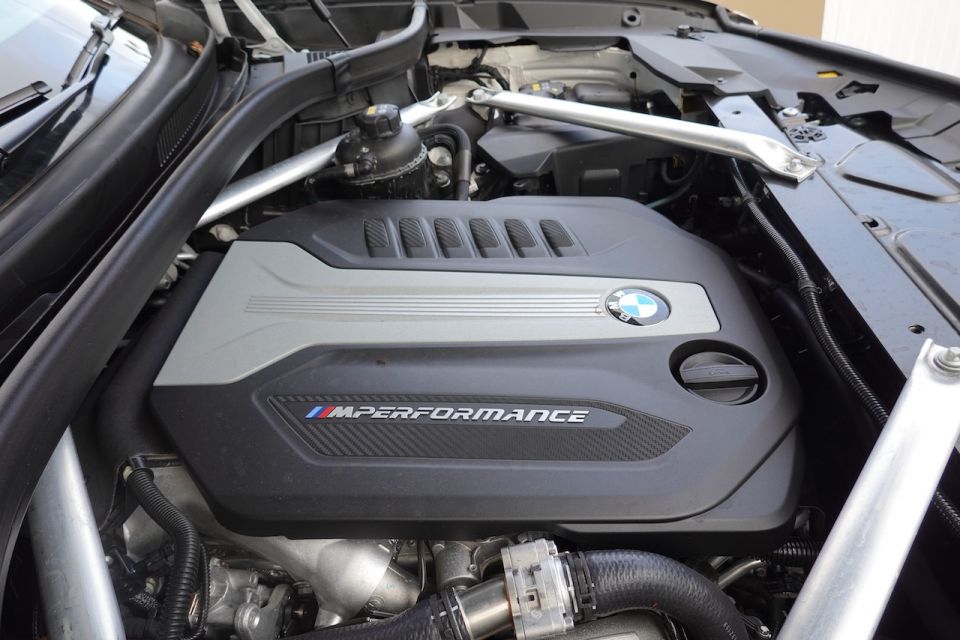
By way of comparison our temporarily-discontinued M50d has been recently replaced by the petrol-powered M50i, which swaps out the quad-turbo diesel for a thumping 4.4-litre twin-turbo V8 making 390kW and 750Nm between 1800 and 4600rpm.
Give it full beans and you’ll go from 0-100km/h is 5.4 seconds, compared with a more sedate seven seconds from the 30d.
Interestingly, the M50d never really feels all that quick – at least, not in the same way the X5 M50d does. It’s effortless though, and the diesel is wonderfully refined. Above 1400rpm it’s doubtful you’d pick it as a diesel, but that’s been a hallmark of BMW 3.0-litre engines for a while now.
While it’s fun to have that kind of shove available for a bit of performance play every now and again, the M50d proved a brilliant family chariot for effortless long-distance travel. Cruising at 110km/h felt like we were travelling at walking pace at times, such is the ease with which this thing devours the kilometres.
For me it’s ride comfort that rules first and foremost in a family-sized SUV, and the X7 M50d is sublime in its ability to completely anaesthetise bumps, lumps, and the outside world.
And it’s all the more impressive knowing the X7 rides on 22-inch wheels with run-flat tyres and their firmer sidewalls.
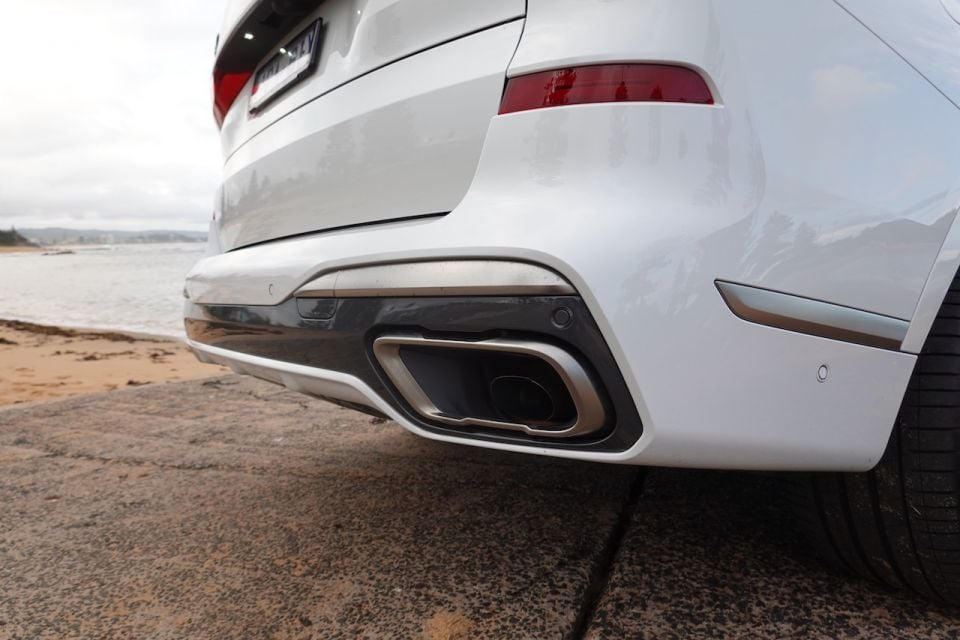
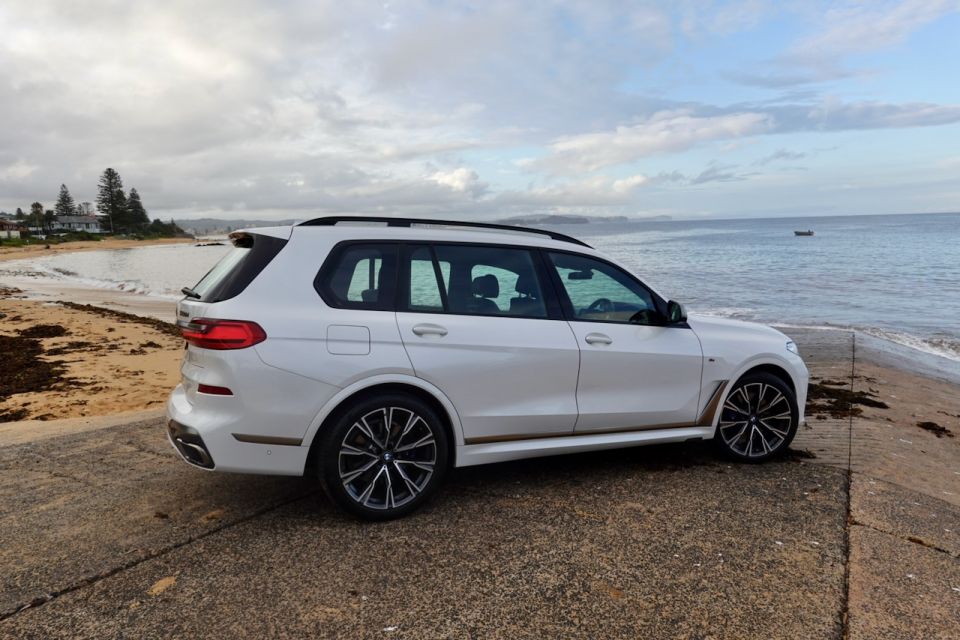
There’s good reason for that. Standard across all X7 variants is two-axle air-suspension with automatic self-levelling. It’s not all about ride comfort, either – the big bus is more than capable of being chucked into a few nice bends without any nasty side effects.
Terranora Rd, which runs from the Pacific Highway up to Terranora proper is wonderfully twisty and nicely cambered, and provided the perfect opportunity to lean on the big BMW.
While no amount of electronic sorcery can disguise such grand proportions, it certainly does push the laws of physics. This is where the X7 M50d surprised me most; with its ability to deliver adept cornering at a solid clip without feeling like a minibus.
That’ll be the all-wheel drive, active rear differential and rear-wheel steering working in concert. This X7 also gets active roll stabilisation for exceptional handling.

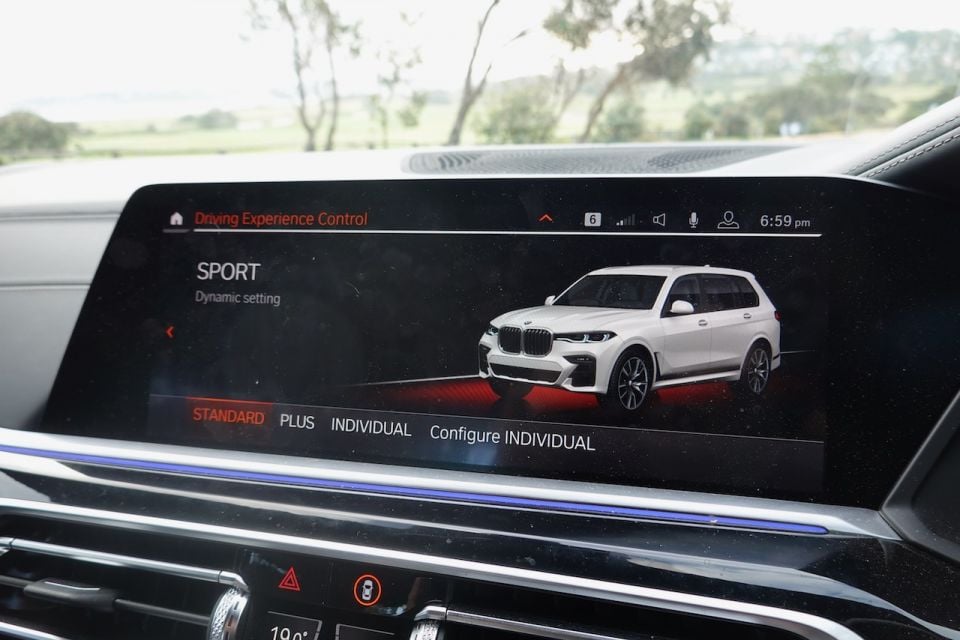
Where expert car reviews meet expert car buying – CarExpert gives you trusted advice, personalised service and real savings on your next new car.
For those intending to get their X7 M50d a down and dirty, buyers would be wise to look at the optional off-road package that adds underbody protection and specific drive modes. It can wade up to 500mm and has 221mm of ground clearance, while towing capacity increases to 3.5 tonnes.
There’s a useful 80L fuel tank and European data has a claimed fuel economy of 7.4L/100km.
On our real-world testing we recorded an average of 8.0L/100km on mostly freeways at the legal limit. It’s an impressive performance given the stop/start conditions through several north coast towns, and heavy traffic during the annual holiday period.
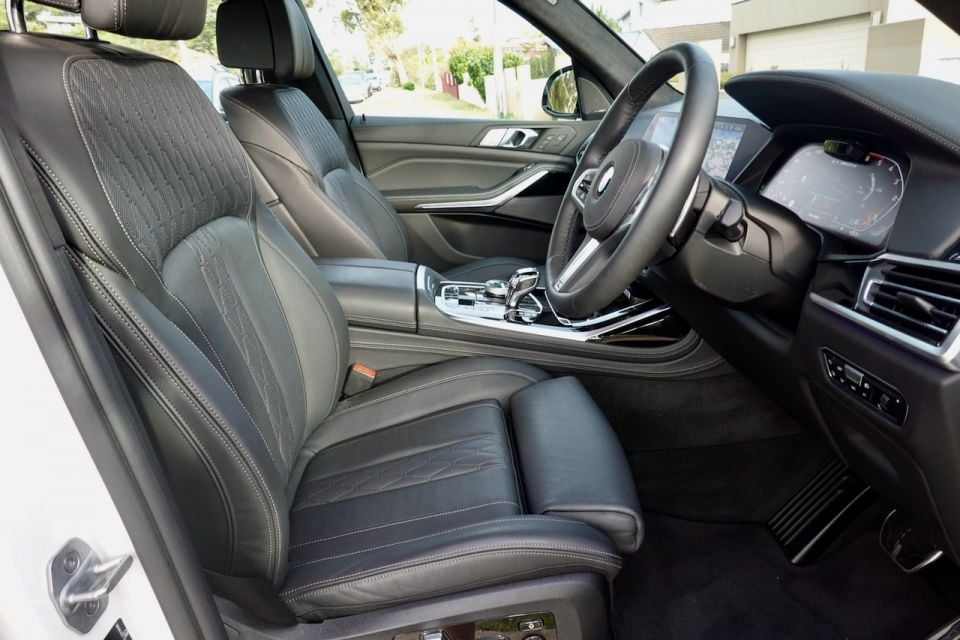
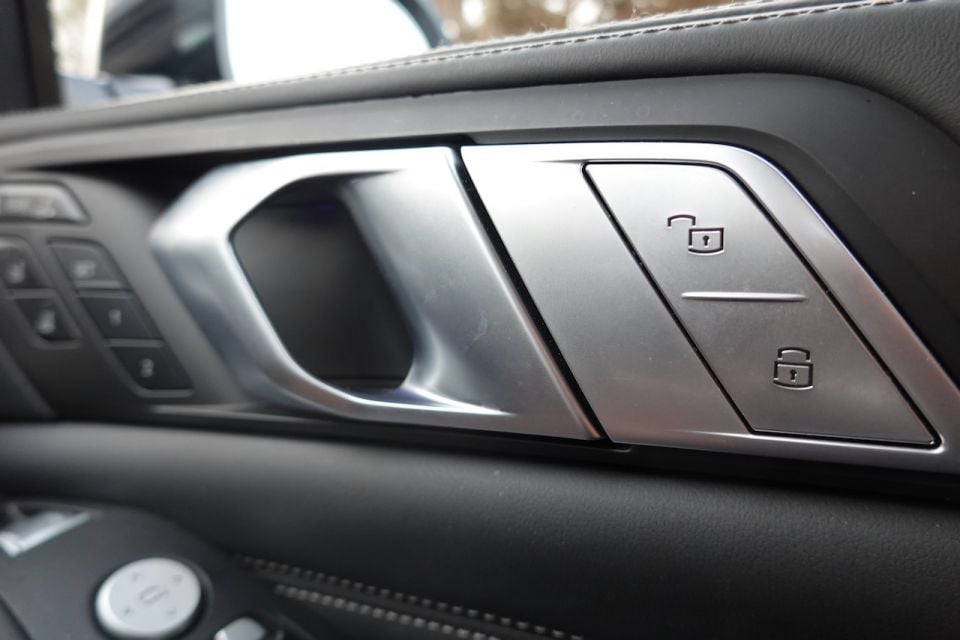
BMW maintains a three-year warranty despite premium rivals such as Mercedes-Benz moving to a five-year warranty. There is, however, a range of comprehensive capped price service plans on offer including a five-year/80,000km BMW Service Inclusive for $1980 without consumables.
Even with a family of four, it’s all too easy to get use to such vast levels of interior space. Add to that a package that includes sublime luxury, ride, and technology and it’s easy to convince yourself of the need for an M50d.
There are no major gripes, from an engineering or packaging perspective. This a superb diesel engine, which delivers both satisfying performance and economy, though is does command a huge premium over the X7 xDrive 30d.
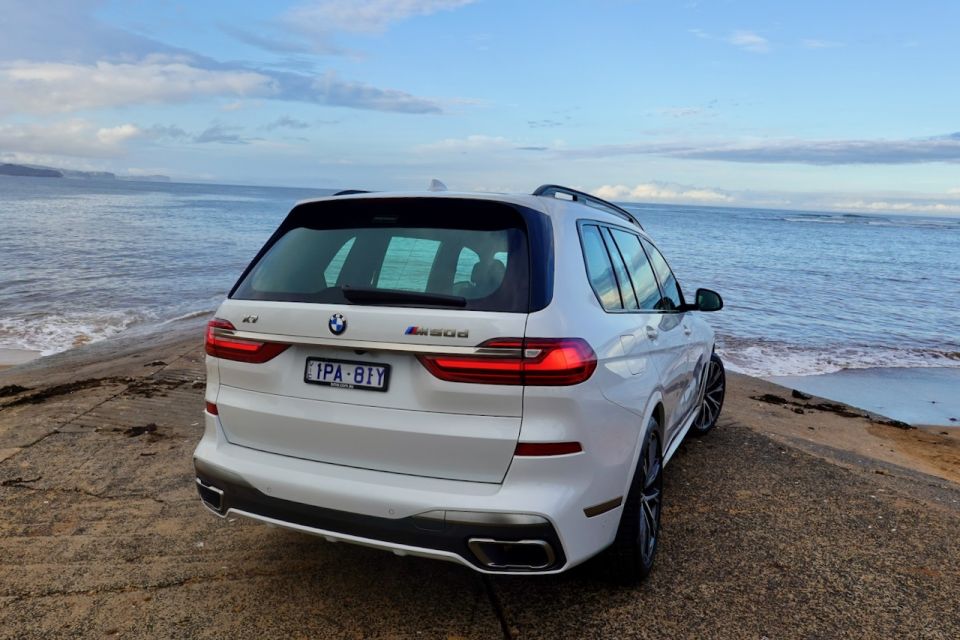
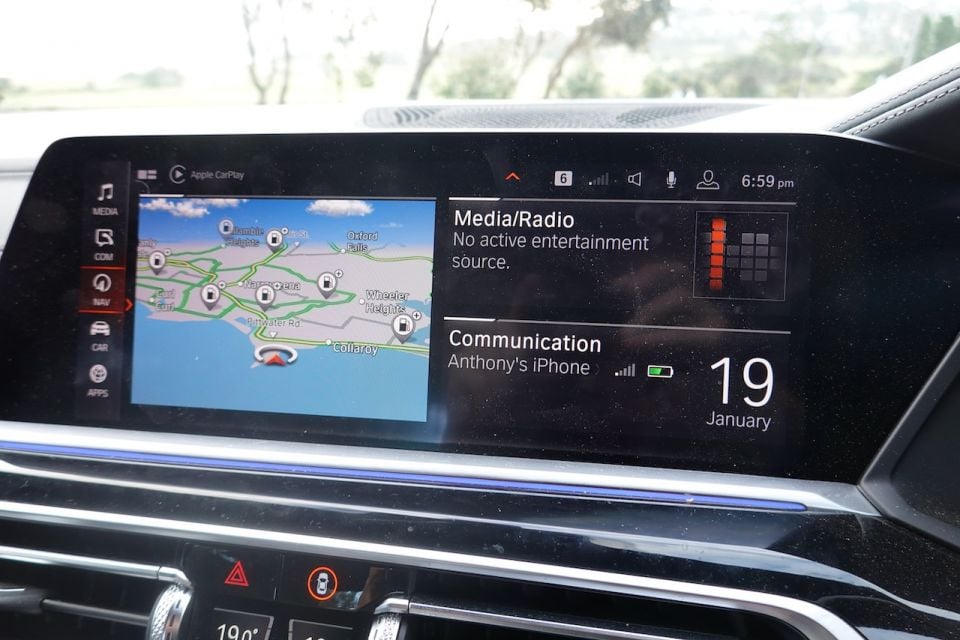
Note: the BMW X7 M50d has been replaced by the M50i priced from $171,900 plus on roads. BMW says there are still some new M50d examples in showrooms for those keen on diesel power.
Where expert car reviews meet expert car buying – CarExpert gives you trusted advice, personalised service and real savings on your next new car.
Anthony Crawford is a CarExpert co-founder and senior presenter with 20+years in automotive journalism and content creation.


Damion Smy
15 Hours Ago


Josh Nevett
4 Days Ago


CarExpert.com.au
5 Days Ago


Damion Smy
7 Days Ago


Derek Fung
7 Days Ago


Ben Zachariah
10 Days Ago